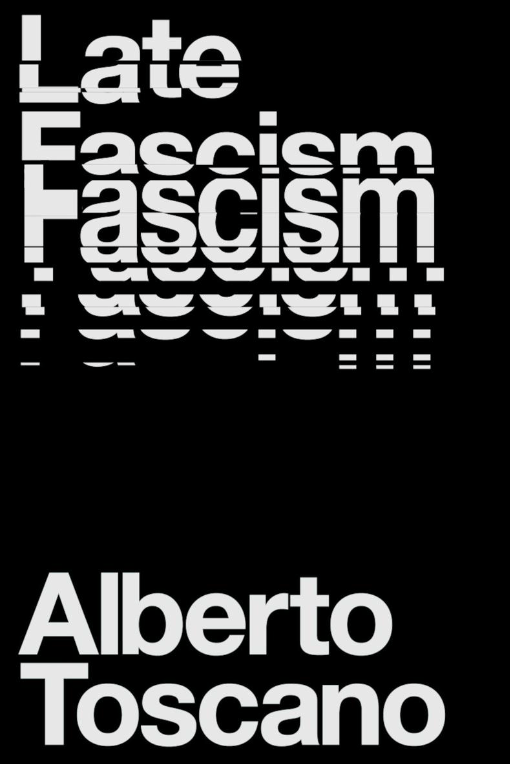Fascism in the 2020s
In 1976, the philosopher Herbert Marcuse wrote that:
“American fascism will probably be the first which comes to power by democratic means and with democratic support.”
A few years earlier, in a series of letters between Black Panther George Jackson, Angela Davis and Jackson’s attorney John Thorne, Jackson wrote:
“Fascism was the product of class struggle. It is an obvious extension of capitalism, a higher form of the old struggle — capitalism versus socialism. I think our failure to clearly isolate and define it may have something to do with our insistence on a full definition — in other words, looking for exactly identical symptoms from nation to nation. We have been consistently misled by fascism’s nationalistic trappings.” (Blood in My Eye)
Both of these statements are fundamental to the discussion of contemporary fascism that is the essence of Alberto Toscano’s recent book titled Late Fascism. As the world watches the potential re-election of Donald Trump to the White House, the genocidal war against the Palestinians being waged by Israel with full support from the United States and the Biden administration, and the ongoing popularity of numerous far right movements around the globe, the question of fascism is both relevant and frighteningly current. Despite this, there seems to be no generalized understanding of fascism’s modern manifestations or how to fight and prevent its potential rule, especially in the so-called West.
A very important, but often ignored or dismissed element of fascism is that it is a culmination of a certain direction capitalism can take. It is a direction that is directly related to certain crises that are built into the chaos that defines capitalism; a chaos that upends the working classes and those Marx called the petit bourgeoisie—small business people, technocrats and professionals—while enhancing the economic and political power of the capitalist class. The turmoil experienced by the former two strata mentioned above is such that it forces them towards political responses outside the comfortable choice presented by the bourgeois electoral system.
In the Europe between the two great wars of the twentieth century, those choices were communism and fascism. Given communism’s fundamental opposition to the economy and politics of the bourgeoisie, fascism became the politics of the formerly democratic bourgeois class. As Toscano points out, nothing makes this clearer than that fascism was invited in by the king and by Hindenburg in Germany. Indeed, it was the hatred of the communists that convinced Hindenberg to hand the chancellorship to Hitler and the Nazis. It was also that fear that convinced the ruling classes, their banks and corporations to support that handover. This fact left me with the thought that even if Trump loses in 2024, his followers will force the issue well beyond the stolen vote campaign of 2020, perhaps creating a compromise whereby he moves back into the White House to forestall major civil unrest.
Beyond the economics that leads capitalist countries to fascism are race and racial politics. Toscano discusses this in detail, reminding the reader of WEB DuBois’ observation that European fascism in the twentieth century was born in colonialism. The treatment of the Roma, the Jews and others deemed undesirable by the Nazis and (in different degrees and with different foci) the Italian fascists had been honed over decades of European colonialism in the Americas, Africa and Asia. It is an oft-repeated trope that Hitler acknowledged the US genocidal wars against the indigenous peoples of North America that provided him with the template for what became known as the Holocaust. Richard Rubenstein’s classic work, The Cunning of History, expands on this idea by linking the Nazi work camps to US and Brazilian slavery and its mechanization of humanity.
A couple of the more interesting and important additions to the ongoing discussion of fascism one finds in Late Fascism is Toscano’s assertion that fascism does not completely obliterate freedom. Indeed, Toscano argues that fascism actually increases freedom, not only of those at the top and in the Party, but also those whose interests it represents—white supremacists (Hindus in India), the petit bourgeoisie and others who benefit from its relaxation of environmental and labor regulations put in place by the liberal state. Of course, like all manifestations of capitalism, the only unquestioned rights belong to property and those who own it. Capital’s response to challenges to this fundamental right have been temporary at best. One need only look at the history of the global north since the end of World War Two to understand this. Social democracy and its manifestation as the welfare state began to be seriously dismantled with the advent of neoliberalism in the late 1970s. The ongoing social upheaval caused by the privatization and ultimate destruction of most government support systems has not only caused massive inequality, it has as its ultimate goal the reduction of the government to its essential roles: war and repression. Given this, a fascist government is the ideal means to produce such a system.
Late Fascism takes a deep look at fascism. It considers its inherent contradictions and its various manifestations in the modern world. Instead of insisting definition that relies on a detailed set of conditions taken from history, the author incorporates those historical manifestations into various contemporary movements and conditions in a valiant and important attempt to define current future fascisms. The Italian fascist Benito Mussolini once noted that fascism is anti-socialist, that is to say liberal. (57) That, I believe, is an essential truth not only fundamental to Toscano’s text, but to any genuine understanding of fascism and how to fight it.
No comments:
Post a Comment